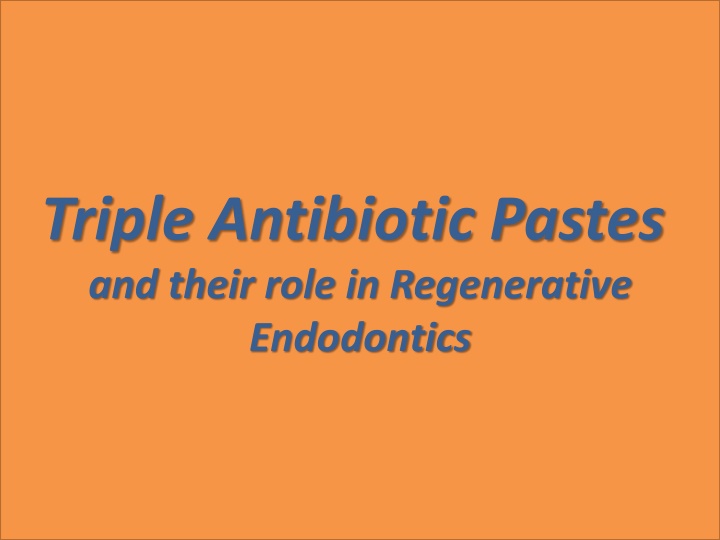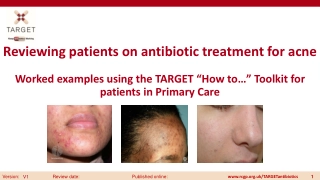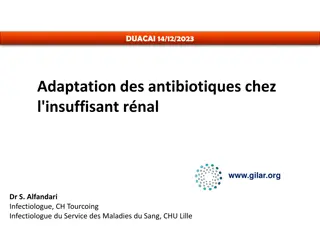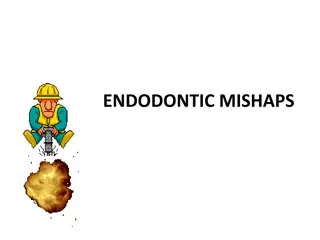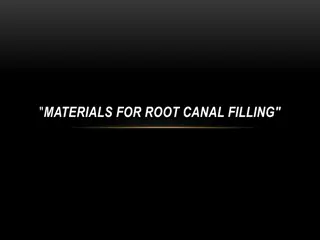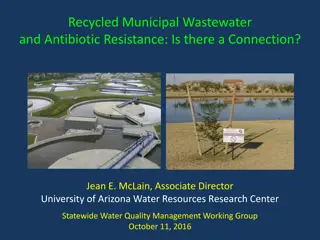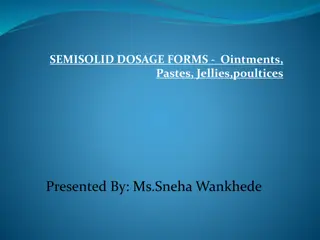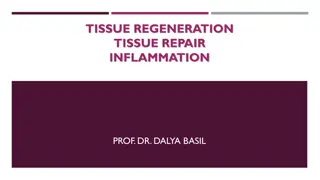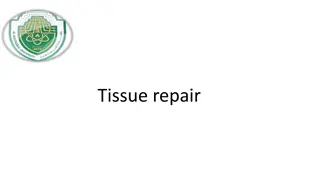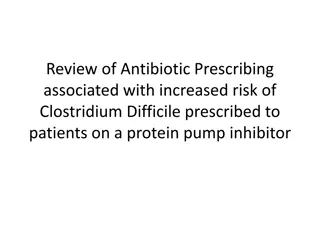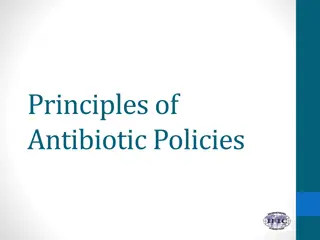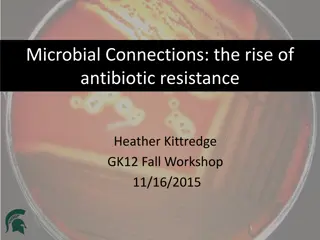Role of Triple Antibiotic Pastes in Endodontic Regeneration
Endodontic therapy is crucial for treating infected tooth pulp. Triple Antibiotic Pastes (TAP) play a significant role in Regenerative Endodontics by effectively combating microbial infections. Learn about TAP composition, application in endodontics, efficacy, and its use in regenerative treatments. Discover the history, biocompatibility, drawbacks, and the ultimate goal of using TAP in endodontic regeneration.
Download Presentation

Please find below an Image/Link to download the presentation.
The content on the website is provided AS IS for your information and personal use only. It may not be sold, licensed, or shared on other websites without obtaining consent from the author.If you encounter any issues during the download, it is possible that the publisher has removed the file from their server.
You are allowed to download the files provided on this website for personal or commercial use, subject to the condition that they are used lawfully. All files are the property of their respective owners.
The content on the website is provided AS IS for your information and personal use only. It may not be sold, licensed, or shared on other websites without obtaining consent from the author.
E N D
Presentation Transcript
Triple Antibiotic Pastes and their role in Regenerative Endodontics
Triple Antibiotic Paste 1. Introduction 2. TAP composition 3. Application of TAP in Endodontics 4. Efficacy 5. Regenerative Endodontic Therapy 6. History of Regenerative Endodontics 7. Uses of TAP in Regenerative Endodontics 8. Biocompatibility 9. Drawbacks 10. Ultimate goal 25 11
Introduction Endodontic therapy or root canal therapy is a sequence of treatment for the infected pulp of a tooth, which results in the elimination of infection and the protection of the decontaminated tooth from future microbial invasion. The infection of the canal system is considered to be poly microbial infection both aerobic & non aerobic bacteria. Because of complexity of root canal infection, it is unlikely to consider that single antibiotic gives sterile canal system. 25 11
Uses of antibiotics in endodontics first reported in 1951 by Grossman, known as poly antibiotic paste (Penicillin, Bacitracin, Streptomycin, Caprylate Sodium). Hoshino et al, 1996 each antibiotic used alone is in effective against bacteria. Therefore It is essential to use combination of antibiotics to act against all endodontic pathogens and to prevent resistance. Sato et al,1996 developed Triple Antibiotic Paste ( Metronidazole, Ciprofloxacin, Minocycline). Metronidazole selectively toxic to anaerobic bacteria, Protozoa. Ciprofloxacin (bactericidal) bacteria. Minocycline (bacteriostatic) act against gram +ve, -ve Bacteria. act against gram ve 25 11
: TAP composition Antibiotic (3mix) ratio (1:1:1) 1. Metronidazole 2. Ciprofloxacin 1. Metronidazole 2. Ciprofloxacin 3. Minocycline 3. Minocycline Carrier (MP) ratio (1:1) Macrogol ointment, Propylene glycol (3 mix) incorporated into (MP) using the Following 1:5 ( MP: 3 Mix) 25 11
Application of TAP in Endodontics Large periradicular cyst like lesion TAP changed every month until elimination of symptoms to facilitate bone healing . 1stvisit Access, instrumentation, dressing Ca(OH) (1-3 weeks) TAP (3 months) 25 11
Application of TAP in Endodontics Endodontic material in primary teeth Access, orifice enlarged, Glass Ionomer cement, Composite. Good clinical success, low evidance 2 years follow up. filling root canal TAP, radiographic 25 11
Efficacy Hashino et al study: Preclinical model(dog study) 60 teeth accessed and infected X-ray: Apical periodontitis Sampled : 1) before irrigation 2) After irrigation 1.25% NaOCL 3) 2 weeks after delivery of TAP 25 11
Conclusion of study: 1. Before irrigation, all teeth +ve culture anaerobic bacteria 2. After irrigation 1.25% NaOCL, 10% teeth bacteria free 3. 2 weeks after delivery of TAP, 70% teeth bacteria free 25 11
There are several procedures to treat incompletely formed roots that occur when the pulp become infected. 25 11
Apexification: method induce calcified barrier in a root with open apex Apexogenesis : vital pulp therapy procedure performed to encourage continuous physiological development & formation of the root end. 25 11
Regenerative Endodontic Therapy It is biologically based procedure designed to restore function to a damaged and non functioning pulp and subsequent completion of root development. 1. Mesenchymal stem cell intoodontoblast like cell. 2. Scaffolds (clot) and development. differentiated growth factors guiding 25 11
History of Regenerative Endodontics 1. Nygard Ostby : pioneer of regenerative endodontic procedures in early 1960. Iwaya et al, 2001 : described a procedure which they termed Revascularization. Strobl et al, 2003: Radiographic asssessments, laser Doppler Flometry. Banchs & Trope, 2004 : Revascularization, necrotic immature permanent premolar with open apex and large apical lesion. Claus et al, 2004 ; Ritter et al, 2004: Histological tissue regeneration in animals. Trope, 2008 : Revascularization; nature of tissue formed posttreatment unpredictable. 2. 3. 4. 5. 6. 25 11
History con. 7. Huang , 2008: Revascularization; restoration of vascularity to tissue or organ. 8. Wang et al, 2010: studies on animals; apposition material may be dentin, cementum or even bone. 9. Lenzi & Trope, 2012: Revitalization; nonspecific vital tissue forms in the root canal. 10. Emi shimizu et al, 2012: Histological evaluation of revascularization procedure. 25 11
Regenerative Procedure 1ststage regenerative procedure 1. Access opening 2. irrigation 3. Triple antibiotic paste 4. Temporary filling 25 11
Regenerative Procedure 2ndstage regenerative procedure 1. Remove TAP 2. Irrigation 3. Bleeding 4. Capping material MTA 25 11
Uses of TAP in Regenerative Endodontics Used to create an environment favorable for ingrowth of vasculature and regenerative cells by reducing or eradicating bacteria in the canal space of teeth with necrotic pulp and incompletely formed apices. : 25 11
Biocompatibility 1. Iwaya et al, 2001 apical pathosis healed & root lengthened (Metro..,Cipro..) 2. Banchs & Trope, 2004 apical pathosis healed & root lengthened (Metro..,Cipro.., Minocycline) 25 11
Drawbacks: 1. May stain the teeth (Minocycline : staining crown and root above gingival margin). 2. Allergic reactions( Induction of inflammatory response). 3. Concern TAP it resistance. may cause bacterial 25 11
Ultimate Goal In clinical trials, besides immature permanent teeth with necrotic endodontic therapy has been employed to treat 1. mature permanent teeth with necrotic pulps. 2. teeth with persistent apical periodontitis after primary root canal therapy. 3. traumatized teeth associated horizontal root fractures, root resorption, and avulsion. pulp, regenerative 25 11
25 11
